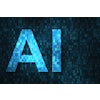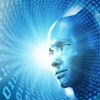Monday, November 27 | 11:50 a.m.-12:00 p.m. | SSC05-09 | Room E451A
A machine-learning technique can diagnose Crohn's disease with high sensitivity and specificity, researchers from Italy report.A diagnosis of Crohn's disease is currently confirmed by clinical evaluation and a combination of endoscopic, histological, radiological, and/or biochemical investigations. While many studies in the literature have assessed the use of imaging in the diagnosis and grading of Crohn's disease, a consensus has not yet been reached about the reliability of these techniques in clinical practice, said senior study author Dr. Giuseppe Lo Re of the University of Palermo.
"Moreover, because of the widely heterogeneous clinical features of [Crohn's disease], the role of radiologists may be challenging, requiring [gastrointestinal radiology] expertise," Lo Re said.
The researchers sought to develop a semiautomatic method that could facilitate earlier diagnosis. They trained a machine-learning algorithm using MR enterography images labeled with quantitative and qualitative features that have been associated with Crohn's disease or considered to be helpful in its diagnosis. In testing, the algorithm yielded 94.8% sensitivity and 100% specificity, which is higher than the performance reported in the literature for manual reference methods, he noted.
Lo Re emphasized the crucial and irreplaceable role of MRI in determining the extraluminal features of Crohn's disease. This is particularly important given that the time elapsed from the onset of symptoms to diagnosis -- as well as the site, extent, and behavior of disease -- deeply influence patient prognosis, outcome, therapy, and complications, he said.
"The proposed technique has a great usability and degree of acceptance, and it has the great advantage of not requiring any expertise in gastrointestinal radiology," Lo Re told AuntMinnie.com. "Moreover, once developed, this [method] does not require any parameter setting or deep knowledge about the [machine-learning] technique."
To learn more, attend the presentation by first author Maria Chiara Terranova on Monday.




















